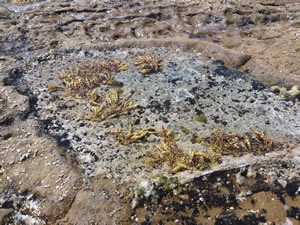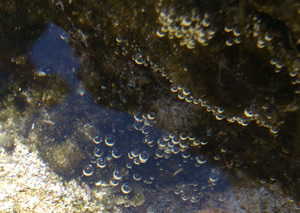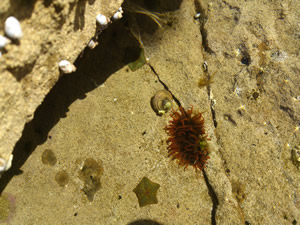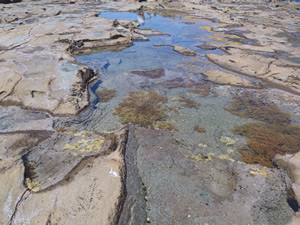Click on each image to enlarge.
Shallow rock pools provide habitats for many different creatures and small ecosystems readily develop.
Click the image on the right to enlarge it and identify some of the creatures present in this shallow rock pool.
Click to see a deeper rock pool. What are some of the differences?

Algal slime often grows on the submerged rocks. The image on the right shows slime growing on the face of a rock in one of the rock pools.
This slime is an
The gas that is seen forming on the surface is most likely
This gas is the result of
The algal slime seen on the right is a source of
What is the ultimate energy source for the ecosystems found in the tidal pools?

The Red beadlet anenome (Actinia equine), shown on the right, is common in the tidal rock pools at Cape Paterson (Victoria).
Sea anemones feed on small fish and small crustaceans. Anemones are
The shade that is provided in this rock pool is an example of
Five armed cushion stars are also present in the rock pools. They eat microscopic algae and slime from the rocks and are hermaphrodites.
What does the term hermaphrodite mean?
Cushion stars are

Click to see some of the creatures that are attached to rocks at low tide.
Identify as many as you can?
What strategies have they developed for survival on rock pools.
How do they avoid dehydration?
How do they avoid becoming prey to creatures such as seagulls?
Try to identify as many of the organisms as you can.
Is there an obvious pattern of behaviour for where limpets like to rest at low tide? Does this give limpets a survival advantage? Explain.

